![]()
|
Beech & Hancock |
Location and period of operation:
|
Beech
& Hancock |
Tunstall |
1857
|
1876 |
Earthenware
manufacturer at Tunstall,
Stoke-on-Trent,
England.
|
Subsequently: James Beech
|
Church Bank Works. The Church Bank Works were built in 1842 by Mr. Robert Beswick (of Chell, the present owner), by whom they were carried on till 1860, and afterwards successively by the firms of Beech & Hancock, Eardley & Hammersley, and Ralph Hammersley alone.
This is one of the oldest manufactories in Tunstall. In the beginning of the present century it belonged to and was worked by Mr. Ralph Hall, and is still the property of his descendants, his sole executor being Mr. Frederick J. Bowers, by whom (as successor to his father, Mr. George F. Bowers) the Brownhills Pottery was carried on until that concern was formed into a company. Mr. Ralph Hall was succeeded in the manufactory by Messrs. Podmore Walker & Co., by whom it was carried on until about 1862, when it passed into the hands of Messrs. Beech & Hancock, by whom it was much improved, and from them to its present occupier, James Beech. The productions of the firm are the ordinary classes of earthenware and stoneware for the home trade. In these wares dinner, tea, toilet, and all the usual services are largely produced in every variety of style and of various degrees of ornamentation, both in "sponged," printed, painted, enamelled, gilt and lustred styles. Stoneware jugs and other articles are also largely made and are of excellent quality, as are also black ware and other jardinieres flower vases, &c.
Llewellyn Jewitt, Ceramic Art of Great Britain, 1878 |
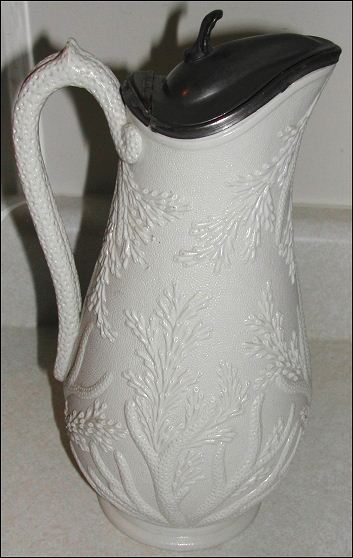 Salt glazed stoneware jug with a pewter lid |
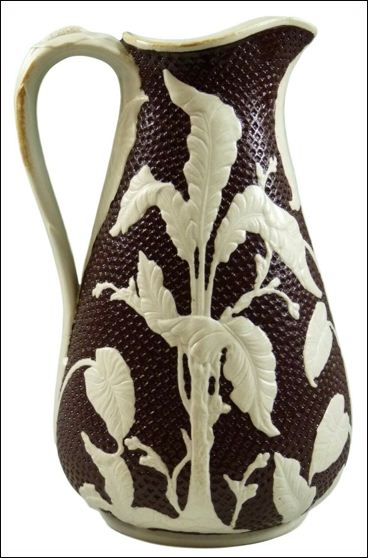 |

the registration
diamond shows that the design |
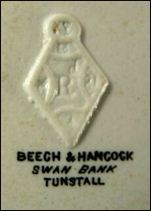 Beech & Hancock Swan Bank Tunstall |
|
Jeddo
was also used as a pattern name by J & M P Bell (Glasgow 1842-1928)
and William Adams. Jeddo was an anglicised name for the Japanese port of Edo. After 1868, Edo was renamed as Tokyo. The names Jeddo and Yedo became commonly used by English-speaking people in the mid-1800s. |
the Victorians had a fascination for oriental places and as Asia started to open up many potters used names which they thought represented the Far East |
photos courtesy: Angela Kennelly

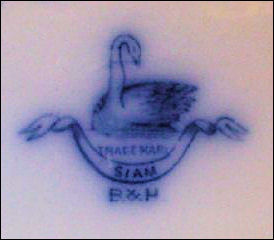
Beech and Hancock plate in
the SIAM pattern
[during the 1862-76 period a swan device was often included]
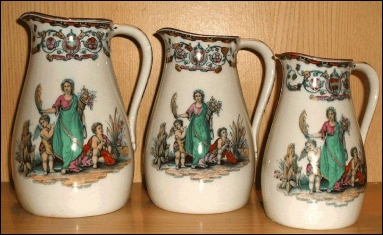
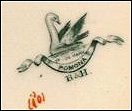
Beech and Hancock jugs in
the POMONA pattern
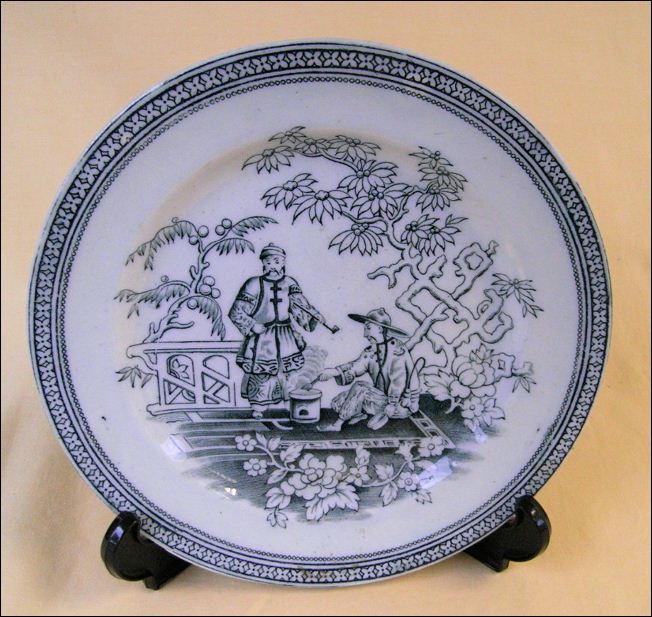 plate in a romantic 'Asian' pattern NOTE: it is sometimes assumed that this
pattern was produced by Bednall &
Heath |
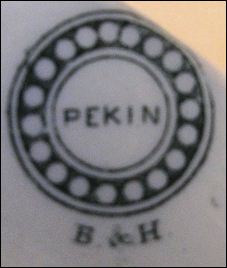 PEKIN B & H |
this hand coloured tea set in the Pekin pattern has some items marked
with B & H , some with J B while other items are not markedJames Beech was the successor company to Beech & Hancock - the use of
both sets of initials in the same style mark shows that the manufacturer was
Beech and not Bednall & Heath
PEKIN
B & H
PEKIN
J B
Initials and marks used on ware for identification:
BEECH & HANCOCK
B & H
[The name of the pattern is
sometimes included]

Beech & Hancock
Swan Bank
Tunstall

TRADE MARK
B & H
'Siam' is the pattern name
[during the 1862-76 period a swan device was often included]
- click for more information on the Swan Bank Works, Tunstall -
Questions, comments, contributions?: Steve Birks